
I love to cook and bake and get creative in the kitchen. But it wasn't until I took an actual knife skills class (at Sur La Table in San Francisco) that I started to see what a difference how you cut elevates your cooking experience. So with the help of our friends at Portland-based Benchmade (whose cutlery is totally customizable) we tapped one of our now favorite chefs, Danielle Prewett, for tips on how to cut (and dice and julienne) like a pro. Prewett shares her knife skills below, plus the recipe for her crowd-pleasing Cauliflower Salad with Apple. Check it out!
A Proper Hold
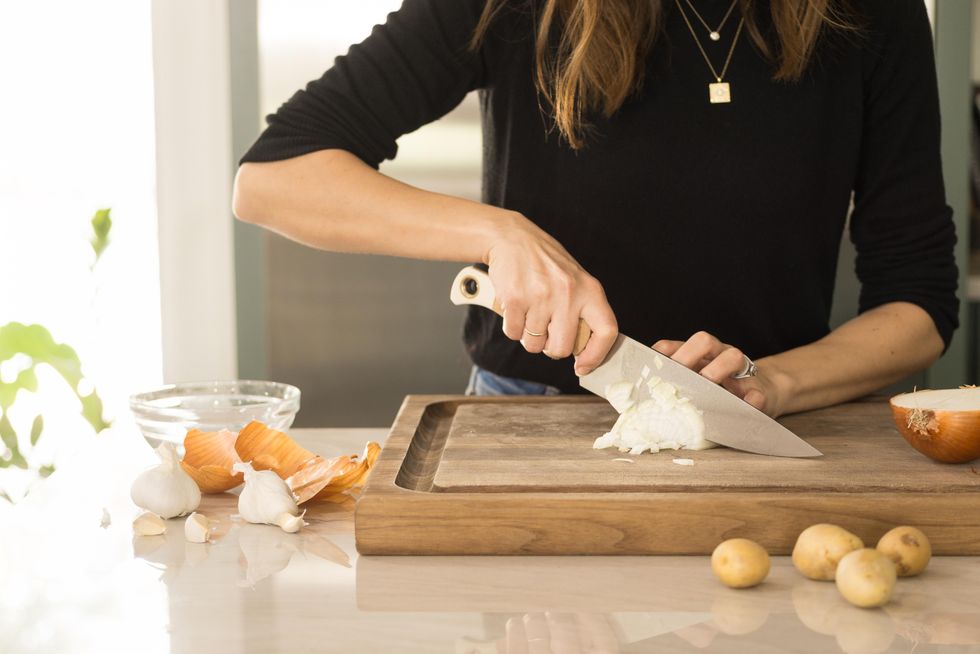
It gets some getting used to but holding a knife is a skill in itself. "You really want the knife to be an extension of your hand so that you have more dexterity," says Prewett. That means choking up on the blade vs. holding it as you might a pencil (pointer finger out). And what about your free hand?
"Most people know it, but they don't do it. The 'bear claw' or just getting your fingers bent so that your tips of your fingers are tucked underneath your knuckles. The most important one is always the thumb," says Prewett. That's because your thumb can easily slide out if you're just pinching whatever you're cutting with the tips of your fingers vs. tucking your fingers under. "[By tucking], if you do have an accident, you're just slicing skin basically off your knuckles, which is way better than slicing off the end of your finger," she adds.
Her Pet Peeve: The Knife Scrape
A shortcut to dulling the blade of your knife is to scrape it along your cutting board, knife edge first. "You get into this mindless habit of using the knife to scrape up your food and always in one direction. By doing this, you're constantly messing with the alignment of your knife and it's a really bad habit. When you do that same motion over and over in one direction, you're really dulling out your knife. So I tell people to flip the knife over and use the back end to scoop everything. It's also kind of like nails on the chalkboard, just hearing a knife scrape." she laughs.
Her Go-To Knives
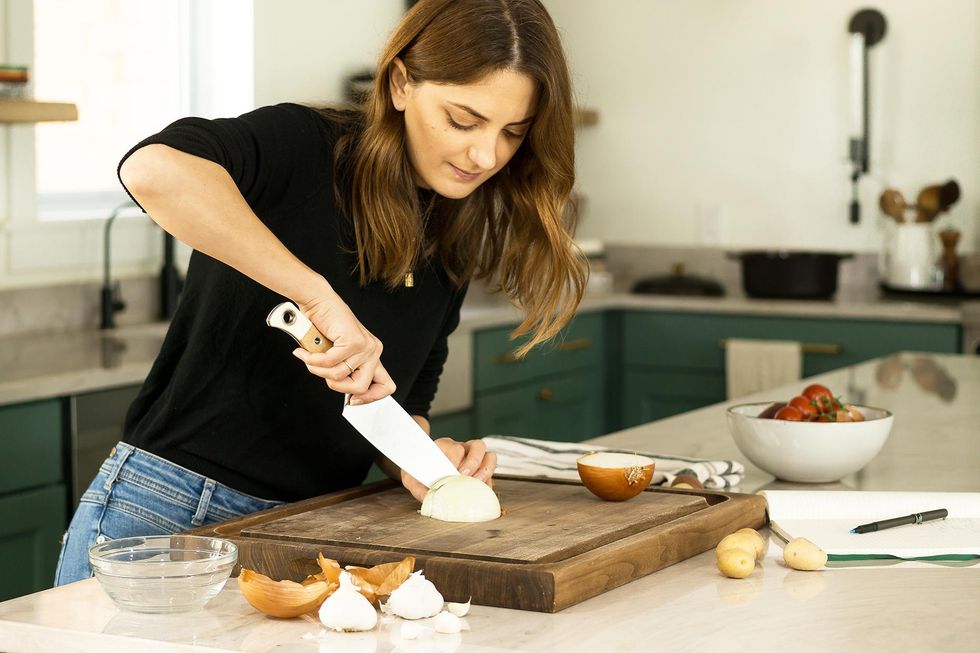
"The Chef's knife is the workhorse of the kitchen," says Prewett. "It's the knife that I use for everything, from the heavy-duty things, like breaking open a butternut squash, to really fine-chopped cuts or julienne cuts to create different textures. It's the knife that I use 90 percent of the time."
The other 10 percent she reaches for either a paring or a utility knife, a boning knife, and a bread knife. "I use the utility knife a lot more than I thought I would. For those moments where I'm making a really quick snack, like my little charcuterie plate, and I just want to chop some little pieces of cheese or meat. It's, to me, that quick-cooking, easy to clean, put it away, kind of a knife."
Prewett, who lives in North Dakota with her husband, discovered a passion for ethical eating, the premise for her blog Wild+Whole. "I fell in love with cooking with wild game and foods because it's something that allowed me to connect with my food in a really meaningful way...instead of just buying food at the grocery store, where you don't know where it comes from." She started hunting with her husband and processes all of the meat herself "after we bring it in from the field." That's where a boning knife comes in, which she uses to break down a chicken, for example.
"What I like about Benchmade's Meat Crafter is the steel is a lot thicker [than most boning knives], which is great for working with really big hunks of meat." Wild animals, she adds, are constantly using their body and their muscles and their tendons are a lot stronger than what you would find in a domestic animal.
Using The Whole Blade
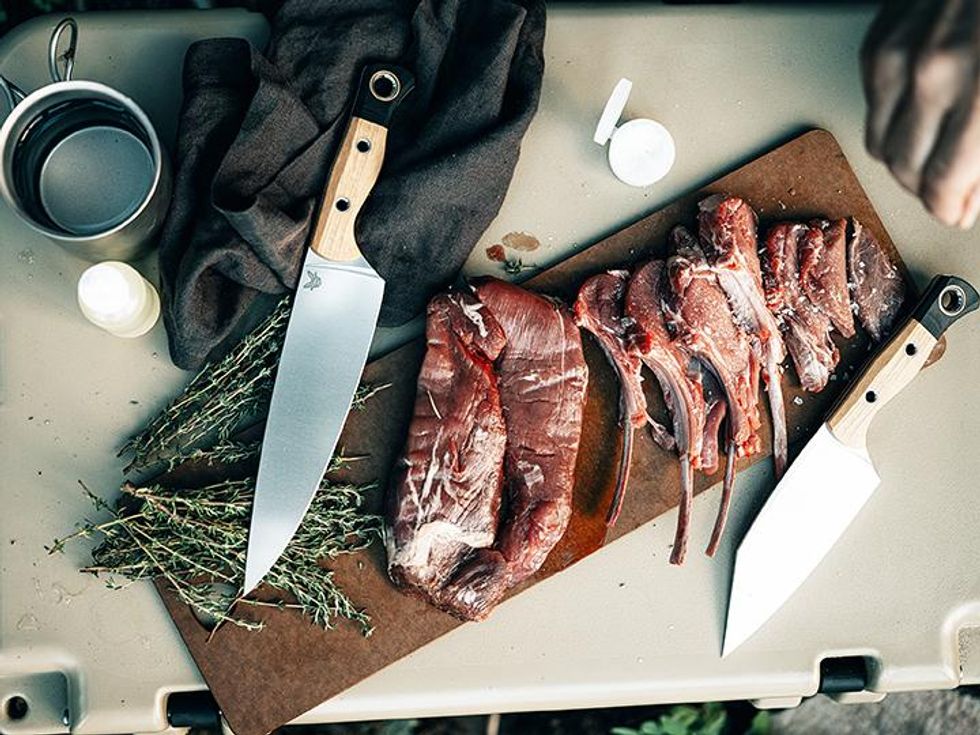
"I see a lot of people going up and down with the knife and using only a portion of the blade, instead of using the whole blade," says Prewett. Instead you want to use the full length of your blade. For example, when you're slicing you want to use a circular motion, keeping the blade tip against the board at all times.
Eat With Your Eyes First

"I think having something that looks really beautiful always tastes better," says Prewett. (Agreed!) So think outside the box when you're slicing and dicing. Prewett suggests instead of always slicing an onion across the grain, think about slicing it with the grain for a different texture.
"You can actually change the taste of the onion, cutting an onion crosswise can actually make it more stringent versus lengthwise can make it a little bit more delicate tasting," she says. "Instead of always chopping things in squares, think about maybe a really fine julienne if you're making a salad. So you create all these different textures and it looks beautiful and it just tastes a little bit better because not everything's all the same," she adds.
Pro tip: If you're running low on garlic, mashing it up really hard with the back of your knife releases the oils and you get more garlic out of it.
The Upkeep
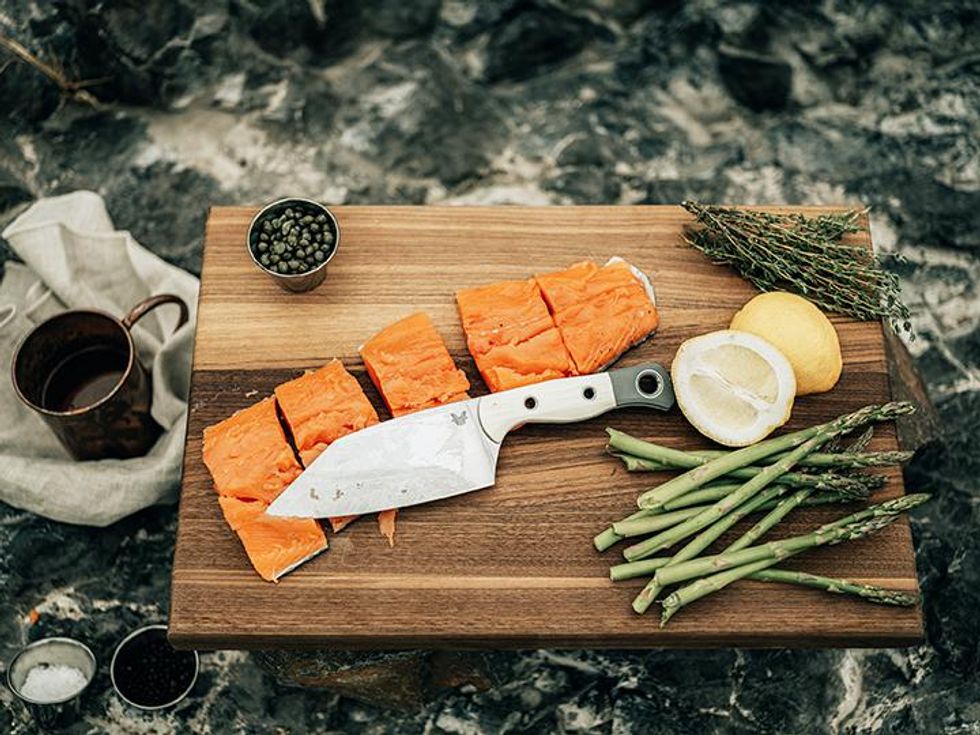
There's a difference between sharpening and realigning your blade. "A honing rod can be used to just realign it and that's something you can do before every time you cook and that'll just help to maintain the edge, but sharpening is actually shaving off the steel of the blade." Instead, you only want to sharpen about once a month, depending on how often you cook.
The Recipe
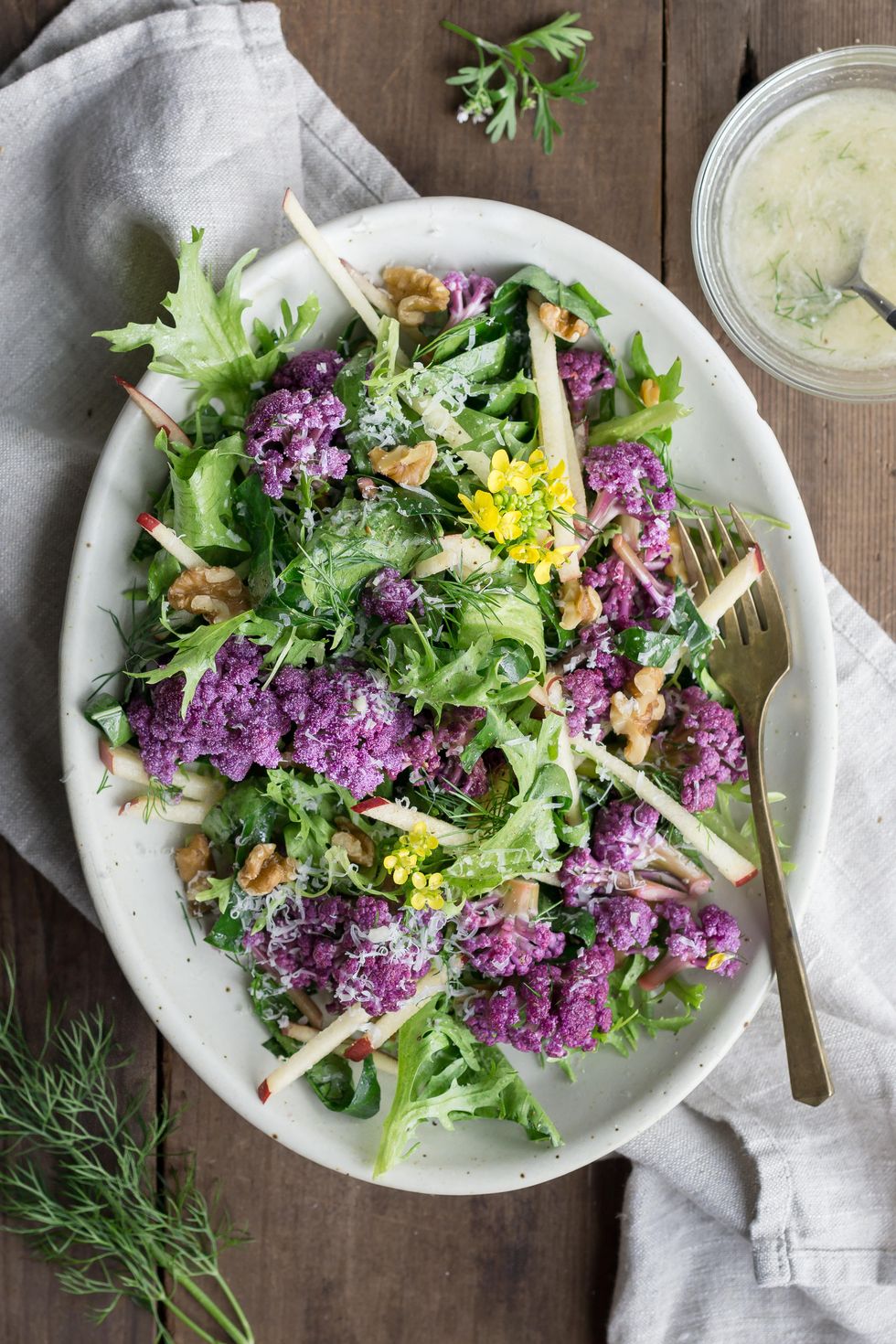
Now for the fun part: Prewett's light and crunchy and flavorful salad recipe. "In this recipe, the purple cauliflower florets are flash-seared to preserve their color, and the leaves are thinly sliced and softened by a bright, herbaceous lemon-dill vinaigrette. This beautifully layered salad offers a refreshing contrast to heavy winter braises," says Prewett.
Cauliflower Salad with Apple
Serves 4
Lemon-Dill Vinaigrette
- ¼ cup fresh lemon juice
- 1 garlic clove, minced
- 2 tablespoons grated Parmesan cheese
- 1 tablespoon chopped fresh dill
- ½ cup walnut oil or olive oil
Cauliflower Salad
- 1 tablespoon neutral-flavored oil, such as avocado or grapeseed
- 1 head purple or white cauliflower, chopped into small florets
- 4 cauliflower leaves (see Tip)
- 4 cups winter frisée
- 1 Honeycrisp apple, cored and sliced into matchsticks
- ½ cup walnuts, toasted and chopped
- ¼ cup grated Parmesan cheese
- Kosher salt and freshly ground black pepper
Make the vinaigrette: In a small bowl, stir together the lemon juice, garlic, Parmesan, and dill. While whisking, slowly pour in the oil in a thin stream, then whisk to emulsify. Taste and season with salt, pepper, and extra dill, if desired. Set aside.
Make the salad: Heat the oil in a sauté pan over high heat. When the oil is hot, add the cauliflower in a single layer. For maximum crispiness, leave room between the pieces and work in batches as needed. Season with a pinch each of salt and pepper. Cook, undisturbed, for a minute or two, then flip and sear the other side until the florets are toasted and golden on the outside but still have a snappy texture; if you’re using purple cauliflower, it should retain its color. Set aside to cool.
Remove the ribs from the cauliflower leaves. Stack the leaves on top of each other, tightly roll them up like a cigar, and thinly slice crosswise.
In a large bowl, toss the sliced cauliflower leaves and the seared cauliflower with a couple spoonfuls of the vinaigrette. Let stand for 15 minutes before serving to macerate and infuse with flavor.
Add the frisée, apple, walnuts, and Parmesan to the bowl with the cauliflower and toss to combine. Drizzle with more vinaigrette and chopped dill as desired and serve.
Tip: If you don’t have cauliflower leaves, you can substitute kale leaves or collard greens.
What are you cooking up this holiday? Share with us @BritandCo and feed your creativity with Brit + Co Cooking Classes!
0 Commentaires